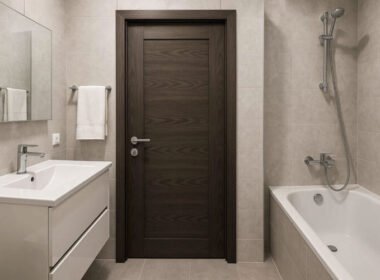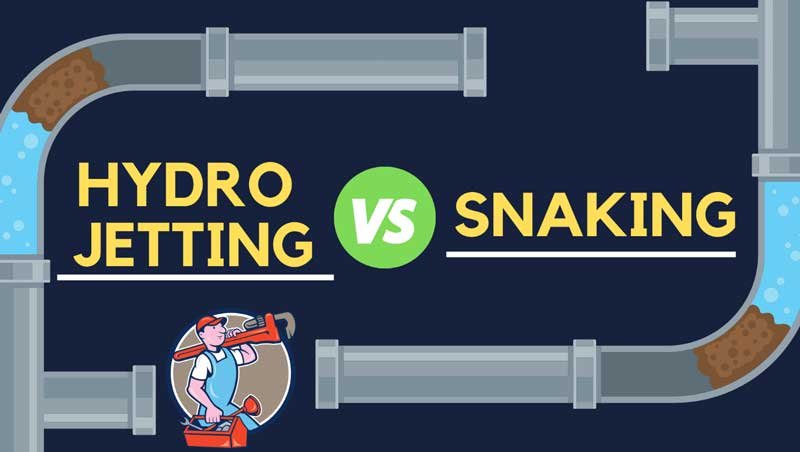Maintaining clean and functioning drains is an essential part of keeping your home in good working order. Whether it’s a slow-draining sink, a stubborn shower clog, or a backed-up toilet, drain issues are a common and frustrating problem for homeowners. Left untreated, leading property management company, Tri Property Pros says that clogged drains can lead to larger plumbing issues, water damage, and costly repairs. Thankfully, there are effective ways to tackle these problems before they get out of hand.
Two of the most popular methods for clearing clogged drains are hydro jetting and snaking. These techniques are commonly used by plumbers to address various types of clogs, but they differ in how they work and in their effectiveness. This raises the important question: which method is best for your home? In this post, we’ll explore both hydro jetting and snaking, weigh their pros and cons, and help you decide which drain cleaning solution is right for your needs.
What is Hydro Jetting?
Hydro jetting is a powerful drain cleaning method that uses high-pressure water to remove blockages and clean the inside of pipes. A plumber feeds a special nozzle into the drain or sewer line, which sprays water at pressures of up to 4,000 psi (pounds per square inch). This high-pressure stream blasts away clogs, grease, scale, and any other debris that may be lining the pipe walls. It’s a bit like power washing the inside of your plumbing system.
Because hydro jetting is so thorough, it’s particularly effective for dealing with severe clogs or recurring blockages. It’s not just a short-term fix—it can also help prevent future clogs by completely cleaning the pipes, eliminating any buildup that could cause problems down the line. Hydro jetting is commonly used for deep cleaning, especially in cases where clogs are frequent or when mineral deposits and grease buildup are an issue. It’s a long-term solution for keeping your drains clear and your plumbing in top shape.
What is Snaking?
Snaking, also known as drain augering, is a more traditional method of clearing drain blockages. It involves using a long, flexible metal cable with a coiled tip that the plumber inserts into the drain. By manually turning the handle of the auger, the plumber can push and rotate the snake through the pipes, breaking up or hooking onto whatever is causing the blockage. The snaking tool can then either pull the clog out or push it through the system, restoring the flow of water.
Snaking is ideal for smaller, more localized clogs, such as those caused by hair, soap scum, or food particles. It’s often the first method a plumber will try because it’s simple, inexpensive, and effective for most everyday drain issues. While it’s not as powerful as hydro jetting, snaking can solve many basic clog problems without the need for more aggressive solutions.
Pros and Cons of Hydro Jetting
Pros:
- Extremely effective for tough blockages: Hydro jetting can remove even the most stubborn clogs, including grease, tree roots, and mineral buildup.
- Cleans the entire pipe: Unlike snaking, which just breaks up the clog, hydro jetting cleans the walls of the pipe, removing debris and buildup that could cause future clogs.
- Ideal for large or commercial systems: For homes with large plumbing systems or for commercial buildings, hydro jetting is particularly effective because it can clear extensive lengths of pipe.
Cons:
- More expensive: Hydro jetting tends to be more costly than snaking because of the equipment and expertise involved.
- May not be safe for older pipes: The high-pressure water can damage older, weakened pipes, especially if they are made of fragile materials or are already compromised.
Pros and Cons of Snaking
Pros:
- Affordable and accessible: Snaking is generally less expensive than hydro jetting and is widely available as a service.
- Gentle on pipes: Snaking is less likely to damage older or more fragile pipes, making it a safer option for homes with aging plumbing systems.
- Good for minor clogs: For smaller blockages caused by hair, food particles, or minor debris, snaking is often all that’s needed to clear the drain.
Cons:
- Not as thorough: While snaking can break up a clog, it doesn’t clean the walls of the pipe, which means some residue might be left behind.
- May require frequent use: Since it doesn’t remove buildup as effectively as hydro jetting, snaking might need to be done more often, especially if you experience recurring clogs.
When to Choose Hydro Jetting
Hydro jetting is the right choice when you’re dealing with frequent or severe clogs. If your home’s plumbing system is prone to clogs caused by grease, mineral buildup, or tree roots, hydro jetting can provide a more permanent solution. It’s also the ideal choice for large residential or commercial plumbing systems that experience heavy use and recurring issues.
If you’re looking for a deep cleaning solution that will not only fix your current clog but also help prevent future problems, hydro jetting is a worthwhile investment. It’s also a great option for homeowners who want long-term peace of mind and fewer maintenance calls.
When to Choose Snaking
Snaking is a great choice for smaller or occasional clogs. If your drain is blocked by hair, soap scum, or food particles, snaking is usually enough to clear the problem quickly and affordably. It’s also the best option for homes with older plumbing systems that may not be able to withstand the high pressure of hydro jetting.
For budget-conscious homeowners, snaking is a practical solution for minor drain issues. While it may not be as thorough as hydro jetting, it can resolve most day-to-day clogs with minimal hassle.
Cost Comparison
Hydro jetting is typically more expensive than snaking due to the specialized equipment and expertise required. On average, hydro jetting can cost anywhere from $350 to $600, depending on the severity of the clog and the length of the pipes being cleaned. In contrast, snaking is usually much more affordable, ranging from $100 to $250.
However, it’s important to consider long-term costs. While snaking may be cheaper upfront, it might need to be done more frequently, especially if the underlying issue isn’t fully addressed. Hydro jetting, on the other hand, offers a more permanent solution, which could save you money in the long run by reducing the need for future drain cleanings.
Which Method is Right for Your Home?
Choosing the right drain cleaning method depends on several factors, including the type of clog, the age and condition of your pipes, and your budget.
- If you’re dealing with minor, infrequent clogs, snaking is likely the best option. It’s cost-effective, gentle on pipes, and perfect for smaller issues like hair and food particles.
- If your home has recurring or severe clogs, or if your plumbing system experiences a lot of buildup from grease or minerals, hydro jetting offers a more thorough and long-lasting solution.
- For older or fragile pipes, snaking is the safer choice, while newer plumbing systems may be able to handle the high-pressure water of hydro jetting.
Ultimately, the best way to determine the right solution for your home is to consult a professional plumber who can assess your system and recommend the most effective method.
Both hydro jetting and snaking have their strengths when it comes to keeping your drains clear and functioning. Hydro jetting provides a powerful, thorough cleaning that can prevent future clogs, while snaking offers a more affordable and gentle approach for minor blockages.
Before making a decision, weigh the severity of your clog, the condition of your pipes, and your budget. And don’t hesitate to contact a professional plumber for advice. Keeping your drains flowing smoothly will save you time, money, and frustration in the long run.










